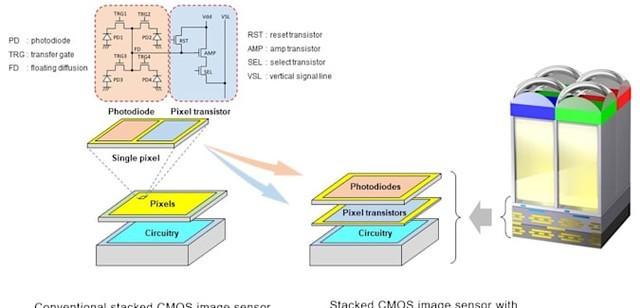Sony has unveiled a new stacked CMOS sensor that uses "two layers of transistor pixels" to double its lighting capacity. A typical image sensor places a photodiode that senses light and a pixel transistor that controls and amplifies the signal in the same layer. However, the new design places the photodiode on top and the pixel transistor on the bottom, "roughly doubling the saturation signal level," Sony said.
Sony pioneered stacked sensors that place fast memory and other electronic components directly under the sensor, allowing faster readout speeds, enabling fast burst shooting and reducing the rolling shutter (jelly effect) of cameras and smartphones. This latest sensor employs a similar idea, but places a pixel transistor on a separate substrate underneath the photodiode layer.

This means that each layer can be optimized, allowing Sony to double the sensor's light saturation (well depth), or the amount of charge that each pixel can hold. This, in turn, can approximately double the ability to capture light.
Sony noted that since the transistor pixels lie on a separate layer, it is able to increase the size of the amplifier transistors. This allows for greater signal boosting, reducing noise when taking images at night or in other dark locations. Sony said the increased dynamic range would allow "high-quality, low-noise images even in low light."
Sony specifically pointed out that this technology will make the photographic quality of smartphones higher. With double the ability to collect light, it will allow for a significant improvement in light sensitivity even in relatively small, high-pixel sensors. Sony hasn't said when the technology will be applied to smartphones or cameras, but it plans to further improve the design of large and small sensors.
(7833919)